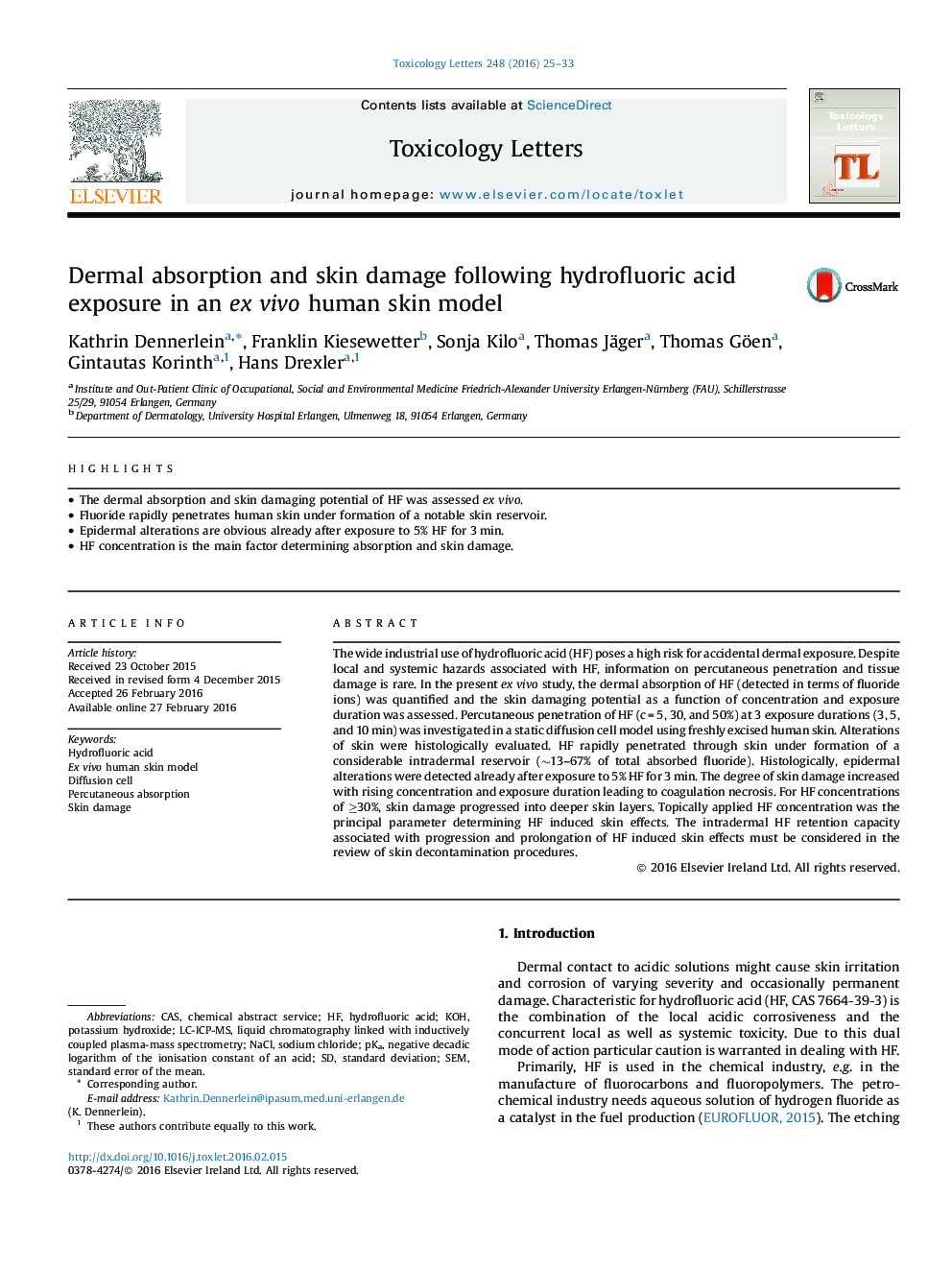| Article ID | Journal | Published Year | Pages | File Type |
|---|---|---|---|---|
| 5859808 | Toxicology Letters | 2016 | 9 Pages |
â¢The dermal absorption and skin damaging potential of HF was assessed ex vivo.â¢Fluoride rapidly penetrates human skin under formation of a notable skin reservoir.â¢Epidermal alterations are obvious already after exposure to 5% HF for 3 min.â¢HF concentration is the main factor determining absorption and skin damage.
The wide industrial use of hydrofluoric acid (HF) poses a high risk for accidental dermal exposure. Despite local and systemic hazards associated with HF, information on percutaneous penetration and tissue damage is rare. In the present ex vivo study, the dermal absorption of HF (detected in terms of fluoride ions) was quantified and the skin damaging potential as a function of concentration and exposure duration was assessed. Percutaneous penetration of HF (c = 5, 30, and 50%) at 3 exposure durations (3, 5, and 10 min) was investigated in a static diffusion cell model using freshly excised human skin. Alterations of skin were histologically evaluated. HF rapidly penetrated through skin under formation of a considerable intradermal reservoir (â¼13-67% of total absorbed fluoride). Histologically, epidermal alterations were detected already after exposure to 5% HF for 3 min. The degree of skin damage increased with rising concentration and exposure duration leading to coagulation necrosis. For HF concentrations of â¥30%, skin damage progressed into deeper skin layers. Topically applied HF concentration was the principal parameter determining HF induced skin effects. The intradermal HF retention capacity associated with progression and prolongation of HF induced skin effects must be considered in the review of skin decontamination procedures.
